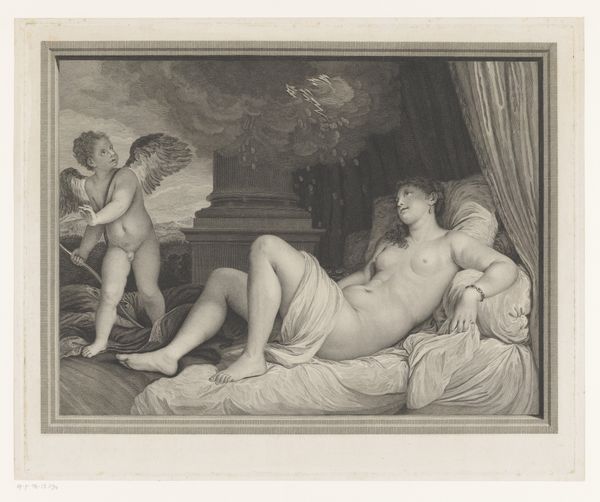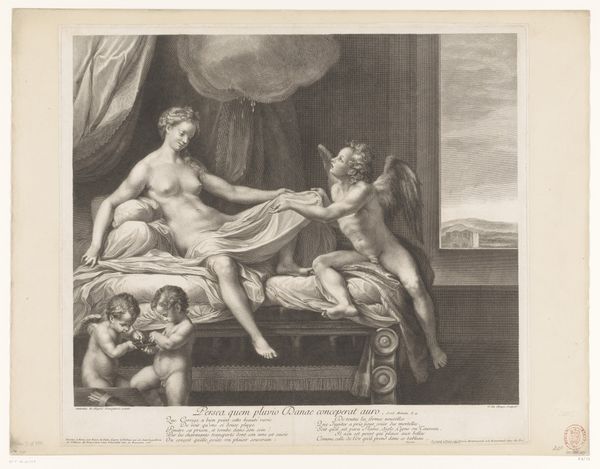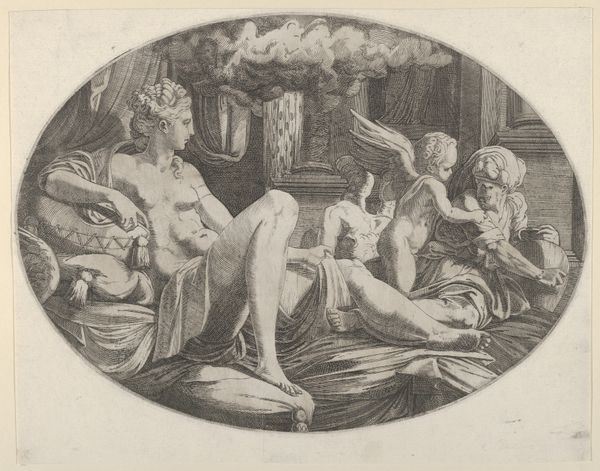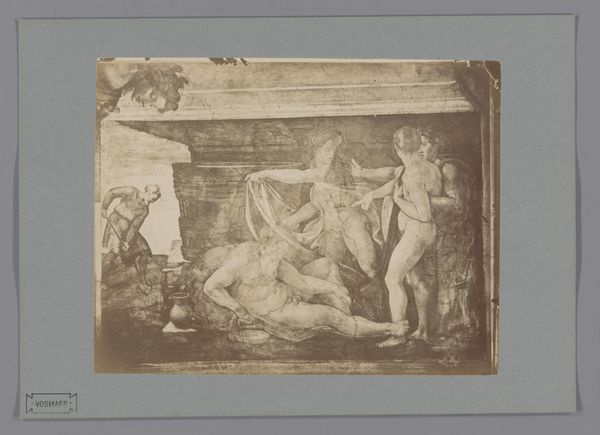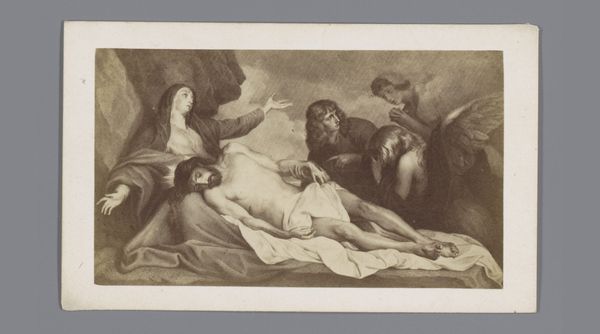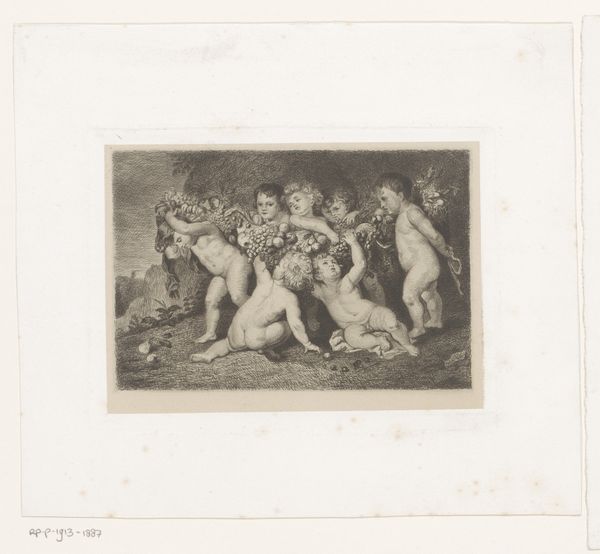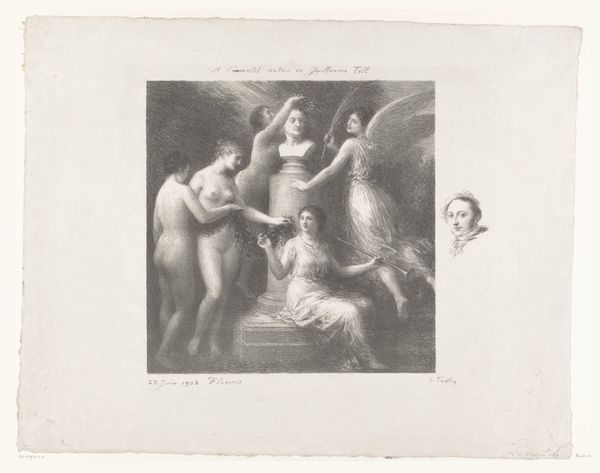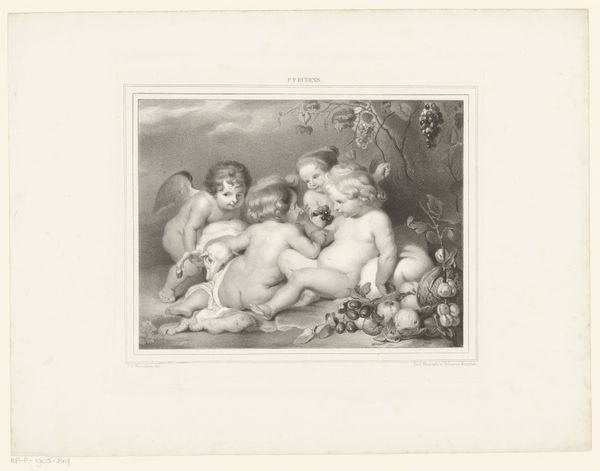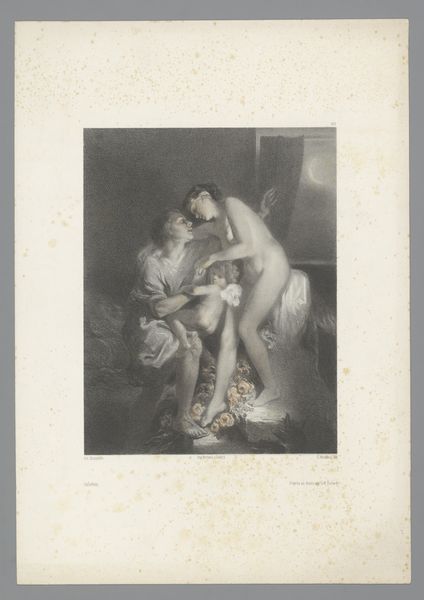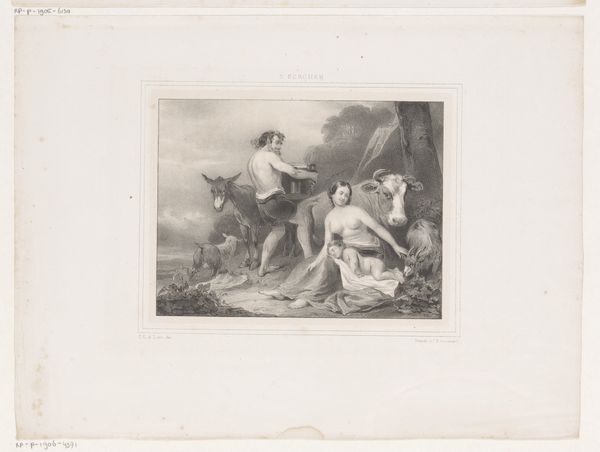
Fotoreproductie van een gravure naar het schilderij Danaë door Correggio 1851 - 1900
0:00
0:00
anonymous
Rijksmuseum
Dimensions: height 172 mm, width 204 mm, height 254 mm, width 355 mm
Copyright: Rijks Museum: Open Domain
This is a reproduction of an engraving after the painting Danaë by Correggio, created by an anonymous artist. Engraving is a printmaking process which involves cutting a design into a flat surface, traditionally a copper plate, using a tool called a burin. Look closely, and you'll see the subtle gradations of tone achieved through the density of the engraved lines. The engraver painstakingly removed slivers of metal to create the image, a labor-intensive process demanding immense skill and precision. Each line serves a purpose, defining form, texture, and light, mimicking the original painting. The cultural significance lies in its ability to disseminate images widely. Engravings like these democratized art, making it accessible beyond wealthy patrons. Consider the social context; the engraver's craft, requiring years of training, was both a trade and an art form. The final print then becomes a commodity, bought and sold in the marketplace, its value determined by its aesthetic appeal and the skill of the engraver. Appreciating this engraving means recognizing the crucial role of craftsmanship in translating artistic vision into tangible form, and into an accessible item to the masses.
Comments
No comments
Be the first to comment and join the conversation on the ultimate creative platform.
